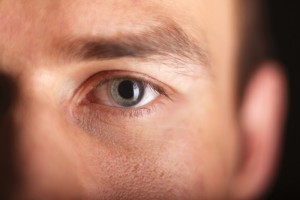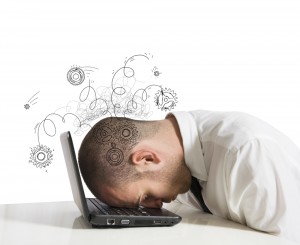
This month in the woodland (and the Twittersphere) we’ve given you #MindfulnessMonday. It’s been our attempt to highlight some of the potential benefits that mindfulness can have on our mental well-being in a variety of different health conditions including breast cancer, depression and anxiety, and psychosis. This last #MindfulnessMonday blog examines the effectiveness of Mindfulness-Based Stress Reduction (MBSR) on social functioning, health & quality of life.
Stress is part of everyday life and it is by managing and coping with our stress that we are able to lead healthy happy lives. Stress was identified as the second most common threat in a work environment by a recent EU survey (European Risk Observatory, 2010). High rates of distress can result in psychological and somatic or physical problems, such as increased cardiovascular disease (Cohen 2007; Chandola, 2008).

Mindfulness-based stress reduction is all about focusing on the moment so that we can become aware of negative behaviour patterns
MBSR works by helping individuals to have awareness of what is happening within the moment and thus identify any negative thoughts, emotions, and behaviours that they have, so that they may be avoided. Once people become aware of these negative behaviour patterns, they are able to respond in a more positive way to both themselves and their environment. Typical MBSR programmes run for 8 weeks (2-2.5 hour sessions), and participants are encouraged to practice at home with audio-tapes (or hopefully mp3s) between sessions (de Vibe et al, 2013).
Methods
de Vibe et al (2013) conducted a systematic review to evaluate the effects of MBSR on social functioning, quality of life, and health in adults. The researchers searched all relevant databases and included all randomised controlled trials (RCTs) that followed the principles developed by Kabat-Zinn (Kabat-Zinn, 1990); any deviations from these were excluded.
The outcomes were grouped into four constructs: anxiety, depression, stress/distress and other measures of mental health.
- 31 RCTS were identified with a total of 1,942 participants
- 7 studies included individuals with psychological problems
- 13 studies included individuals with various physical conditions
- 11 studies recruited individuals from the general population
Subgroup analyses were undertaken on:
- Clinical versus non-clinical samples
- Psychological versus somatic conditions
- Length of MBSR condition
- Effects of compliance to MBSR
- Effects of follow-up time
Results
The effects of MBSR versus control (waiting list / treatment as usual) were as follows:

MBSR had a moderate effect on anxiety, depression, stress and quality of life, amongst other things
- Anxiety 0.53 (95% CI 0.43 to 0.63) e.g. MBSR explains a 53% odds reduction in anxiety
- Depression 0.54 (95% CI 0.35 to 0.74)
- Stress/distress 0.56 (95%CI 0.44 to 0.67)
- Overall ‘mental health’ outcome 0.53 (95% CI 0.43 to 0.64)
- Personal development 0.50 (95% CI 0.35 to 0.66)
- Quality of life 0.57 (95% CI 0.17 to 0.96)
- Mindfulness 0.70 (95% CI 0.05 to 1.34)
- Somatic health 0.31 (95% CI 0.10 to 0.52)
MBSR had a moderate effect in all conditions except for somatic health where it had a small effect. There was a low amount of variance across the mental health studies, while there was a moderate amount of variance in quality of life and personal development (de Vibe et al, 2013).
This review examined participants from the general public, sufferers of psychological problems and somatic conditions. However, there was no difference in the effects between different patient populations. All studies used self-selected participants, and MBSR is a popular stress-related treatment. Therefore its possible that these participant populations may be more psychologically similar than represented by their treatment groups (de Vibe et al, 2013).
There was an effect of MBSR on mental health and length of intervention, although the length of treatment required to have an effect is still unknown. This is probably due to an individual’s readiness to change as well as the length of the course of treatment. Additionally, there was no difference found in effect sizes from home practice suggesting this technique may be less effective; although the quality of at-home practice is unknown (de Vibe et al, 2013).
Only 9 studies included follow up data, and found the effects decreased over time. No studies included long term follow up data (de Vibe et al, 2013).
Discussion

This review suggests that mindfulness might help reduce the very high levels of work-related stress that are so prevalent in the 21st century
MBSR had clear effects on quality of life, mental health, and personal development on multiple different populations as well as alleviating stress; one of the most common workplace problems. This suggests MBSR may be a viable option for some who are dealing with stress-related problems.
Future studies should address the long term effects of MBSR treatment, as well as investigating social functioning as a measure.
Links
De Vibe M, Bjorndal A, Tipton E, Hammerstrom K, & Kowalski K (2012). Mindfulness Based Stress Reduction (MBSR) for Improving Health, Quality of Life and Social Functioning in Adults. The Campbell Collaboration. 2012:3.
Chandola T, Britton A, Brunner E, Hemingway H, Malik M, Kumari M, Badrick E, Kivimaki M, Marmot M. Work stress and coronary heart disease: what are the mechanisms? European Heart Journal. 2008; 29(5): 640-8.
Cohen S, Janicki-Deverts D, Miller GE. Psychological stress and disease (PDF). JAMA 2007; 298(14): 1685-87.
European Survey of Enterprises on New and Emerging Risks: Managing safety and health at work (PDF). European Agency for Safety and Health at Work, European Risk Observatory Report, 2010.
Kabat-Zinn J. Full Catastrophy living (PDF). New York: Bantam, 1990.


#MindfulnessMonday Mindfulness-based stress reduction can alleviate stress and improve quality of life and men… http://t.co/43E5wCeoDB
Are you hit by #StormyWeather ? Try a little #MindfulnessMonday to alleviate that stress http://t.co/JBQ07naGHZ
@Mental_Elf ha you always come with right tweet & advice for any event :-)
@Mental_Elf really! People should be more mindful if the weather turning their life upside down:) great ;)
My #MindfulnessMonday blog for @Mental_Elf on stress reduction http://t.co/JqFFIQGrWv
@MegEliz_ @Mental_Elf Thanks for this. #mindfulness could be used much more widely & not just in MH. Really is so valuable.
.@MegEliz_ @Mental_Elf RE mindfulness meta analysis. Nice thougthful http://t.co/2NfoDheeKC
. @BristolTARG ‘s @MegEliz_ on mindfulness-based stress reduction: http://t.co/H3v45zKH14
@Mental_Elf @MindCharity
A good Stress coping gives your Life a good lifequality
#MindfulnessMonday #Mindfulness based stress reduction can alleviate stress improve quality of life and mental health http://t.co/YbuhG49aul
RT @Mental_Elf: @MegEliz_ blogs for #MindfulnessMonday about @C2update review on Mindfulness Based Stress Reduction http://t.co/JBQ07naGHZ
TARG’s @MegEliz_ blogs for @Mental_Elf on mindfulness based stress reduction. http://t.co/NYoXEln365 #mindfulnessmonday
#MindfulnessMonday SR says that mindfulness has a moderate effect on anxiety, depression, stress & quality of life http://t.co/JBQ07naGHZ
Try a little #MindfulnessMonday to alleviate stress and improve your quality of life http://t.co/C5JpW7NrLm
Mindfulness-based stress reduction can alleviate stress and improve quality of life and mental health http://t.co/wOnFjNtN05
Mindfulness-based stress reduction improves mental health (among other things). Why don’t we teach this in schools? http://t.co/8jecJ6hf9N
Don’t miss: Mindfulness-based stress reduction can alleviate stress, improve quality of life & mental health http://t.co/JBQ07naGHZ
@Mental_Elf …V interesting – I’m inspired! Healthier (and cheaper) than going out drinking at the end of a stressful week
“@Mental_Elf: Mindfulness-based stress reduction can alleviate stress, improve quality of life & mental health http://t.co/VKBBOya0wW”
Would Mindfulness work on television? http://t.co/bJrf8SqIct @Mental_Elf
@DrJohnCosgrove @Mental_Elf What do you mean? You can learn principles of mindfulness from books/tv/net. You can only learn it by practice
@drfavourite @Mental_Elf There are many things on TV best done in the flesh …
@drfavourite @Mental_Elf I was thinking of TV as a way of promoting its adoption. Mindfulness channel? Mindfulness Thought for the Day?
Mental Elf: #MindfulnessMonday Mindfulness-based stress reduction can alleviate stress and improve quality of… http://t.co/Pm6Bm9cjT8
[…] Mindfulness-based stress reduction can alleviate stress and improve quality of life and mental healt…. This systematic review from the Campbell Collaboration suggests that mindfulness might help reduce work-related stress. […]
Mindfulness-based stress reduction can alleviate stress, improve quality of life & mental health http://t.co/JBQ07naGHZ #mhaw15 @MegEliz_